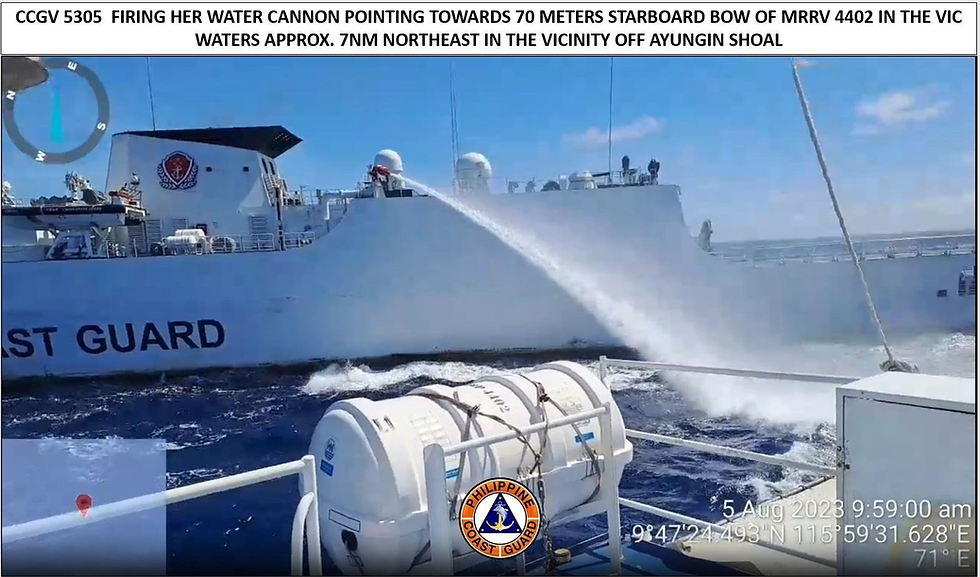The Future Growth of the Royal Australian Navy Fleet
- Jennifer Parker

- Oct 3, 2024
- 3 min read
1 Oct 2024 | Jennifer Parker
The independent analysis into Navy's surface combatant fleet is one of the more significant capability decisions of the Royal Australian Navy in the last 40 years.

The outcomes of the Independent Analysis into Navy's Surface Combatant Fleet announced in February 2024 marked one of the more significant capability decisions in the last four decades of the Royal Australian Navy. Not only did the Commonwealth Government recognise that the surface combatant fleet needed to grow, but more broadly the fleet review’s release represented a change in sentiment towards the role of the RAN in the defence of Australia’s national interests.
RISKY PLAN
For 50 years, reviews of the RAN’s fleet requirements recommended that the Navy required 16 to 20 surface combatants. In his 1986 defence review, Paul Dibb famously remarked that he could find no strategic justification for the consistent force design position that the RAN only required 12 surface combatants, and that the number was more like 17 to 20.
In many ways, this makes it remarkable that even with the 2020 removal of the force design concept of 10 years’ strategic warning time of a potential conflict in our region, the RAN’s surface combatant fleet remained at 11 vessels. The 2020 Force Structure Plan elected to stick with the plan to increase the surface combatant fleet to 12 at some point in the late-2030s.
A plan predicated on the replacement of the Anzac-class with the Hunter-class frigate was decided in 2018. Of course, to get to that point without a significant reduction in the fleet would require each of the eight Anzac-class frigates to be extended nine years. A 2019 Australian National Audit Office (ANAO) report highlighted that the vessels were not likely to last an additional nine years, but the Commonwealth Government persisted with the increasingly risky plan.
Broadly, the surface combatant fleet review outcomes and the growth of the RAN surface combatant fleet were a positive step for Australia’s defence. Challenges still abound, however. The narrow scope of the review excluded the broader functions of the Navy, including mine warfare and sustainment operations. Issues persist in the overall construct of the entire fleet, and this review has only addressed a subset.
PLANNED SCHEDULE
Given the context, it should not have been a great surprise that the Independent Analysis Team (IAT) established in 2023 recommended that the RAN surface combatant fleet be expanded with several significant changes to the planned schedule. The first, and perhaps most anticipated, was that the planned nine Hunter-class frigates would be reduced to six, with delivery scheduled in the 2030s and 2040s, although the timeline is not entirely clear.
The second cut was the reduction of the beleaguered Arafura-class Offshore Patrol Vessel (OPV) program, which was reduced from a planned 12 to six hulls. It remains unclear when the Arafuras will enter service, with the first hull having been launched in 2021, but its entry into service appears to be delayed indefinitely.
The surprise to many was the decision to acquire 11 general-purpose frigates, with the first three to be built overseas and the remaining eight to be built in Western Australia. The general-purpose frigate, which will have the ability to operate across all spheres of warfare, will form the backbone of the RAN’s surface combatants.
The second surprise, although it perhaps should have been expected, was the decision for Australia to acquire six large optionally-crewed surface vessels (LOSVs) from the mid-2030s. Although there is much to be said about the employment and viability of this capability, which is yet to be developed in the US, it is positive to see the RAN enter the uncrewed capability space on a larger scale.
CHALLENGES STILL ABOUND
Broadly, the surface combatant fleet review outcomes and the growth of the RAN surface combatant fleet were a positive step for Australia’s defence. Challenges still abound, however. The narrow scope of the review excluded the broader functions of the Navy, including mine warfare and sustainment operations. Issues persist in the overall construct of the entire fleet, and this review has only addressed a subset.
Second, despite the decision for the fleet to grow, the fleet will actually decrease in the near term with HMAS Anzac decommissioned, and Arunta to follow in 2026, further emphasising the gap between the risk articulated in the 2024 National Defence Strategy and the RAN’s actual capability between now and the mid-2030s.



Comments